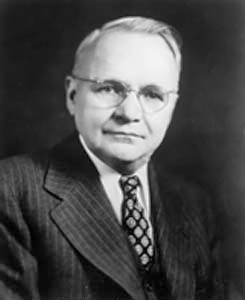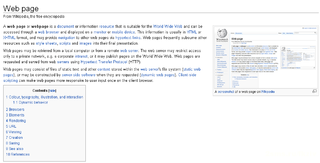
In telecommunications, orthogonal frequency-division multiplexing (OFDM) is a type of digital transmission used in digital modulation for encoding digital (binary) data on multiple carrier frequencies. OFDM has developed into a popular scheme for wideband digital communication, used in applications such as digital television and audio broadcasting, DSL internet access, wireless networks, power line networks, and 4G/5G mobile communications.
Digital subscriber line is a family of technologies that are used to transmit digital data over telephone lines. In telecommunications marketing, the term DSL is widely understood to mean asymmetric digital subscriber line (ADSL), the most commonly installed DSL technology, for Internet access.
Telephony is the field of technology involving the development, application, and deployment of telecommunication services for the purpose of electronic transmission of voice, fax, or data, between distant parties. The history of telephony is intimately linked to the invention and development of the telephone.

Digital audio is a representation of sound recorded in, or converted into, digital form. In digital audio, the sound wave of the audio signal is typically encoded as numerical samples in a continuous sequence. For example, in CD audio, samples are taken 44,100 times per second, each with 16-bit sample depth. Digital audio is also the name for the entire technology of sound recording and reproduction using audio signals that have been encoded in digital form. Following significant advances in digital audio technology during the 1970s and 1980s, it gradually replaced analog audio technology in many areas of audio engineering, record production and telecommunications in the 1990s and 2000s.

Harry Nyquist was a Swedish-American physicist and electronic engineer who made important contributions to communication theory.

FIELDATA was a pioneering computer project run by the US Army Signal Corps in the late 1950s that intended to create a single standard for collecting and distributing battlefield information. In this respect it could be thought of as a generalization of the US Air Force's SAGE system that was being created at about the same time.
Gilbert Sandford Vernam was a Worcester Polytechnic Institute 1914 graduate and AT&T Bell Labs engineer who, in 1917, invented an additive polyalphabetic stream cipher and later co-invented an automated one-time pad cipher. Vernam proposed a teleprinter cipher in which a previously prepared key, kept on paper tape, is combined character by character with the plaintext message to produce the ciphertext. To decipher the ciphertext, the same key would be again combined character by character, producing the plaintext. Vernam later worked for the Postal Telegraph Company, and became an employee of Western Union when that company acquired Postal in 1943. His later work was largely with automatic switching systems for telegraph networks.
Broadband over power lines (BPL) is a method of power-line communication (PLC) that allows relatively high-speed digital data transmission over public electric power distribution wiring. BPL uses higher frequencies, a wider frequency range, and different technologies compared to other forms of power-line communications to provide high-rate communication over longer distances. BPL uses frequencies that are part of the radio spectrum allocated to over-the-air communication services; therefore, the prevention of interference to, and from, these services is a very important factor in designing BPL systems.

A mixed-signal integrated circuit is any integrated circuit that has both analog circuits and digital circuits on a single semiconductor die. Their usage has grown dramatically with the increased use of cell phones, telecommunications, portable electronics, and automobiles with electronics and digital sensors.

The Bell 103 modem or Bell 103 dataset was the second commercial modem for computers, released by AT&T Corporation in 1963. It allowed digital data to be transmitted over regular unconditioned telephone lines at a speed of 300 bits per second. It followed the introduction of the 110 baud Bell 101 dataset in 1958.

Electronic media are media that use electronics or electromechanical means for the audience to access the content. This is in contrast to static media, which today are most often created digitally, but do not require electronics to be accessed by the end user in the printed form. The primary electronic media sources familiar to the general public are video recordings, audio recordings, multimedia presentations, slide presentations, CD-ROM and online content. Most new media are in the form of digital media. However, electronic media may be in either analogue electronics data or digital electronic data format.
Maurice Karnaugh was an American physicist, mathematician, computer scientist, and inventor known for the Karnaugh map used in Boolean algebra.

Underwater acoustic communication is a technique of sending and receiving messages in water. There are several ways of employing such communication but the most common is by using hydrophones. Underwater communication is difficult due to factors such as multi-path propagation, time variations of the channel, small available bandwidth and strong signal attenuation, especially over long ranges. Compared to terrestrial communication, underwater communication has low data rates because it uses acoustic waves instead of electromagnetic waves.

A modulator-demodulator or modem is a computer hardware device that converts data from a digital format into a format suitable for an analog transmission medium such as telephone or radio. A modem transmits data by modulating one or more carrier wave signals to encode digital information, while the receiver demodulates the signal to recreate the original digital information. The goal is to produce a signal that can be transmitted easily and decoded reliably. Modems can be used with almost any means of transmitting analog signals, from light-emitting diodes to radio.
Trans Canada Microwave or Trans-Canada Skyway was a microwave relay system built in the 1950s to carry telephone and television signals from Canada's east coast to its west coast. Built across the nation, the towers ranged in height from nine metres high, to one in northern Ontario that was over 100 metres high. The system included 139 towers spanning over 6,275 kilometres and cost $50 million.
Pulse-code modulation (PCM) is a method used to digitally represent analog signals. It is the standard form of digital audio in computers, compact discs, digital telephony and other digital audio applications. In a PCM stream, the amplitude of the analog signal is sampled at uniform intervals, and each sample is quantized to the nearest value within a range of digital steps.

John Mathew Cioffi is an American electrical engineer, educator and inventor who has made contributions in telecommunication system theory, specifically in coding theory and information theory. Best known as "the father of DSL," Cioffi's pioneering research was instrumental in making digital subscriber line (DSL) technology practical and has led to over 400 publications and more than 100 pending or issued patents, many of which are licensed.
Echo suppression and echo cancellation are methods used in telephony to improve voice quality by preventing echo from being created or removing it after it is already present. In addition to improving subjective audio quality, echo suppression increases the capacity achieved through silence suppression by preventing echo from traveling across a telecommunications network. Echo suppressors were developed in the 1950s in response to the first use of satellites for telecommunications.











